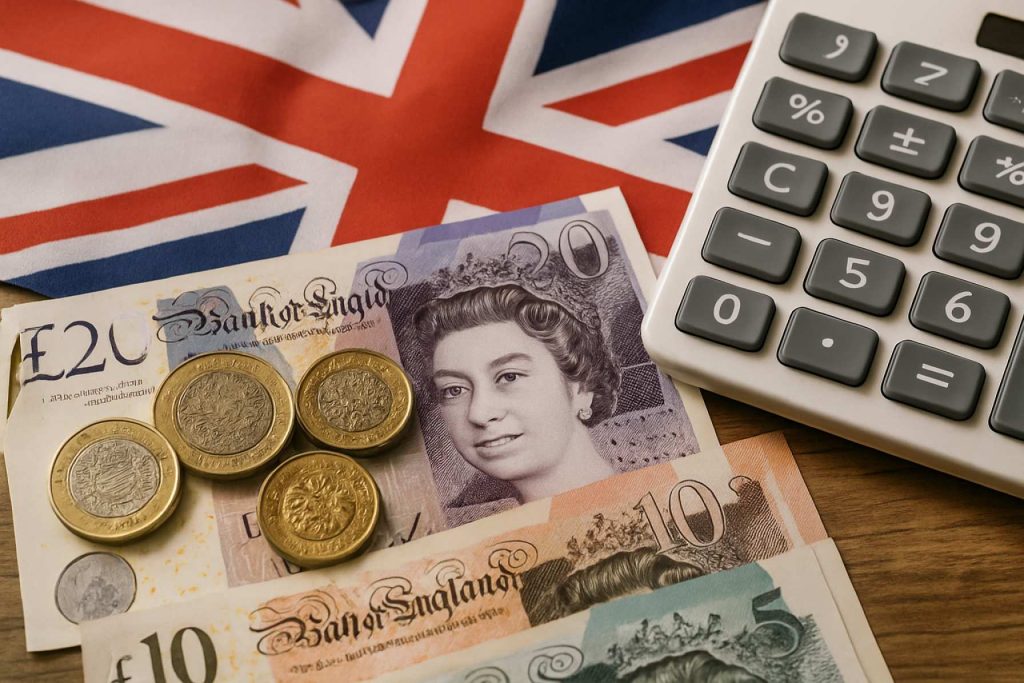
- UK inflation surged to 3.5% in April 2025— the sharpest rise since early in the year, surpassing forecasts.
- Housing, utility bills, and transport costs are the main drivers, with leisure activities and outings also pricier.
- Falling clothing and footwear prices offered minimal relief amid broader cost pressures.
- Key inflation triggers: higher household bills, business taxes, and the minimum wage hike.
- The Bank of England’s interest rate cuts may slow; inflation is not expected below 3% before 2026.
- Trade deals and tariff rollbacks with the US may eventually ease price pressures.
Raindrops patter across cobblestone streets as British shoppers clutch receipts and glance anxiously at grocery shelves. The cost of everyday life in the United Kingdom, long a barometer of public unease and household budgeting, has climbed sharply once more.
According to the Office for National Statistics, prices in April 2025 soared 3.5% higher than the same month a year ago, the steepest rise since the turn of the year. While economists had braced for a spike, the jump outpaced even those sober expectations, which stood at 3.3%. The monthly surge—1.2% in April compared to 0.3% in March—sent fresh ripples of concern through households and financial markets alike.
Behind the dry statistics lies a world of real impact: Britons are seeing the effects on their wallets, from the clatter of coins at the local pub to the cold click of the thermostat dial. The usual suspects, like rising rents and steeper utility bills, played their part. But this story is not just about housing. Transport costs roared higher, leisure activities became pricier, and families found weekend outings, from cinemas to zoos, were putting a more noticeable dent in their budgets.
- Housing and household services led the inflation march, fueled by regulatory shifts and market pressures.
- Transport costs accelerated, reflecting broader global trends in fuel and supply chains.
- Recreation and culture—the theatre tickets, streaming subscriptions, and family outings—became less affordable for many.
The pain could have been worse. As temperatures rose outside, the chill in retail clothing and footwear stores grew, with falling prices in those sectors partially balancing the broader picture.
Why is this happening now? Behind the curtain, a tangle of factors is at work. A substantial uptick in household bills, higher business taxes, and a significant rise in the minimum wage have all contributed to the inflationary surge. The effect is evident at the supermarket till, on train platforms, and in monthly housing statements.
While everyday Britons feel the squeeze, the Bank of England is caught in a careful balancing act. Their target: a crisp 2% inflation rate. But with prices running hotter than desired, central bankers are treading gingerly. Chief economist Huw Pill’s recent warning that borrowing rates have been cut “too quickly” underscores a growing concern about latent inflationary pressures.
The BoE began its gentle downward journey from a daunting 16-year high of 5.25% last August, shaving off just a quarter of a percentage point every three months. Earlier this month, the rate nudged down to 4.25%—but whether this trend will continue is now anyone’s guess. As Rob Wood, chief UK economist at Pantheon Macroeconomics, cautioned, regular, predictable cuts are “far from certain.”
The road ahead? Economists don’t see inflation falling below 3% anytime soon. It’s expected to remain elevated through the year, forcing many to put plans for big purchases or home moves on hold. Interest rates, once expected to ease, may now stay higher for longer, dampening the spirits of first-time buyers and small business owners alike.
Yet hope glimmers on the horizon. Recent trade cooperation between the UK and the US, coupled with the rollback of tariffs once proposed by President Donald Trump, could alleviate some upward pressure on prices. If all goes according to expert predictions, inflation might finally retreat to more comfortable territory in 2026.
Until then, as markets jitter and pundits debate, British families will tighten budgets and adjust plans—waiting for the day when their pound coins stretch a little bit further.
You Won’t Believe the Real Impact of Surging UK Inflation—The Pros, Cons & Hidden Controversies
-
Pros
Wage Growth: The increase in the minimum wage may help some workers keep pace with rising living costs, easing burdens for low-income families.
Potential for Stronger Trade: Recent cooperation between the UK and the US and reduction of tariffs offer hope for future price relief, as noted by the Office for National Statistics.
-
Cons
Widespread Cost Increases: Higher housing, transport, and leisure expenses are straining household budgets and making everyday activities less affordable for many Britons.
Slower Rate Cuts: The Bank of England is proceeding cautiously with interest rate reductions, making borrowing more expensive and impacting first-time homebuyers and small businesses.
Squeezed Savings: As prices climb faster than interest rates, savers see the value of their money eroded over time.
Uncertain Future: Economists warn that inflation is unlikely to dip below 3% in the near term, prolonging financial anxiety.
-
Controversies & Limitations
Monetary Policy Dilemma: Critics question whether the Bank of England has moved too quickly or too slowly on rate cuts, raising debate about its balancing act between curbing inflation and encouraging economic growth.
Policy Effectiveness: Regulatory changes, rising business taxes, and higher wages are double-edged—supporting some households while potentially fueling further price increases, sparking debate over policy trade-offs.
Household Impact: The numbers from the Office for National Statistics tell one story, but lived experiences—especially for vulnerable or lower-income groups—may reveal deeper hardships unreflected in broad data.
Shocking Predictions: What Will Happen to UK Inflation Next?
- Slower Decline in Inflation Rates: According to the Office for National Statistics, analysts forecast that inflation in the UK will remain stubbornly above the Bank of England’s 2% target throughout 2025. Most projections suggest only a gradual retreat, with consumer prices expected to stay above 3% for much of the coming year.
- Interest Rates: Expect Prolonged Highs: With inflation outpacing expectations, the Bank of England may keep borrowing costs higher for longer. Regular, predictable interest rate cuts are “far from certain,” and households should brace for persistent pressure on mortgages and loans.
- Household Budgets Under Pressure: Rising costs for housing, utilities, and travel will continue to squeeze everyday Britons. Economic forecasts warn many families will delay major purchases or reconsider moving homes, with discretionary spending on leisure and culture likely to be curbed through 2025.
- Potential Relief from Global Trade Deals: New trade cooperation—especially with proactive steps like the removal of tariffs between the UK and the US—could provide welcome respite. If these measures take hold, some experts believe that inflation will finally drop closer to target in 2026, easing cost-of-living pain.
- Watch for Turning Points in 2026: While uncertainty rules the short term, there is cautious optimism from major institutions that normality may resume by 2026. Key indicators to monitor include official inflation data from the ONS and monetary policy statements by the Bank of England.
In summary, the next few years look challenging for UK households. While some relief is possible on the horizon, families and businesses should prepare for at least another year of elevated prices and carefully monitor signals from top economic authorities.



